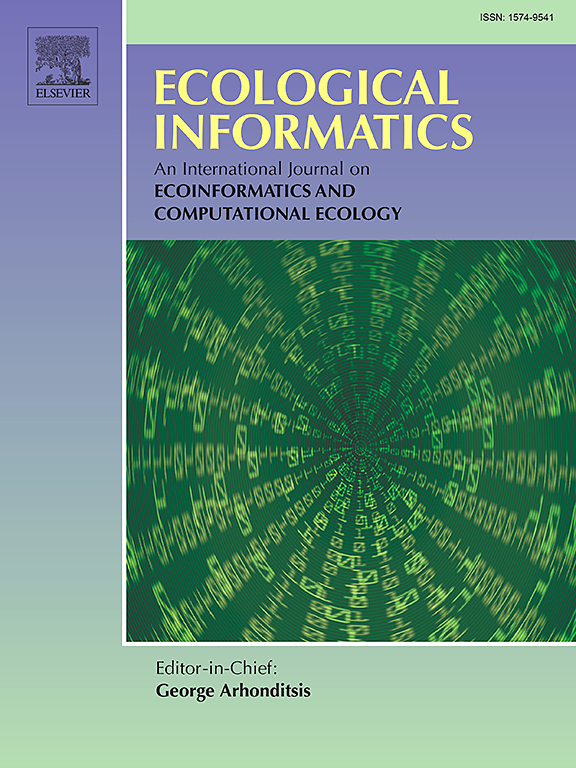An improved graph neural network integrating indicator attention and spatio-temporal correlation for dissolved oxygen prediction
IF 5.8
2区 环境科学与生态学
Q1 ECOLOGY
引用次数: 0
Abstract
Accurately predicting dissolved oxygen (DO) is essential for water environment protection and management. The spatiotemporal dependencies of water quality and the interactions between indicators are neglected in existing prediction models. To improve the DO prediction accuracy, a graph neural network based on indicator attention mechanism and bayesian optimization (BO-AM-MTGNN) was proposed in this study. Hourly water quality data at 20 sampling sites in the Chaohu Lake basin from January 2022 to February 2024 were used as the research dataset. The effectiveness of the BO-AM-MTGNN model was validated through comparisons with baseline models (XGBoost, LightGBM, LSTM, GRU, Informer) and ablation experiment (BO-AM-MTGNN, AM-MTGNN, MTGNN). The results demonstrated that the BO-AM-MTGNN model effectively captured the temporal and spatial information of water quality data. Correlations between indicators can be fully extracted by the indicator attention mechanism. Compared with the MTGNN model, the MAE, RMSE, and MAPE of the BO-AM-MTGNN model decreased by 12.16 %, 5.50 %, and 12.13 %, respectively. The prediction accuracy of MTGNN outperformed the baseline models, with the performance ranking as follows: MTGNN > Informer > LSTM > GRU > LightGBM > XGBoost. The BO-AM-MTGNN model proposed in this study effectively improves DO prediction accuracy. In future studies, the BO-AM-MTGNN model holds potential for water quality early warning and pollution source tracking.

溶解氧预测中指标关注与时空关联的改进图神经网络
准确预测溶解氧(DO)对水环境的保护和管理至关重要。现有的预测模型忽略了水质的时空依赖性和指标间的相互作用。为了提高DO预测精度,本文提出了一种基于指标注意机制和贝叶斯优化的图神经网络(BO-AM-MTGNN)。以巢湖流域20个采样点2022年1月- 2024年2月逐时水质数据为研究数据集。通过与基线模型(XGBoost、LightGBM、LSTM、GRU、Informer)和消融实验(BO-AM-MTGNN、AM-MTGNN、MTGNN)的比较,验证了BO-AM-MTGNN模型的有效性。结果表明,BO-AM-MTGNN模型能有效捕获水质数据的时空信息。指标注意机制可以充分提取指标之间的相关性。与MTGNN模型相比,BO-AM-MTGNN模型的MAE、RMSE和MAPE分别降低了12.16%、5.50%和12.13%。MTGNN的预测精度优于基线模型,其性能排名如下:MTGNN >;告密者比;LSTM祝辞格勒乌比;LightGBM祝辞XGBoost。本文提出的BO-AM-MTGNN模型有效提高了DO预测精度。在未来的研究中,BO-AM-MTGNN模型在水质预警和污染源跟踪方面具有一定的潜力。
本文章由计算机程序翻译,如有差异,请以英文原文为准。
求助全文
约1分钟内获得全文
求助全文
来源期刊

Ecological Informatics
环境科学-生态学
CiteScore
8.30
自引率
11.80%
发文量
346
审稿时长
46 days
期刊介绍:
The journal Ecological Informatics is devoted to the publication of high quality, peer-reviewed articles on all aspects of computational ecology, data science and biogeography. The scope of the journal takes into account the data-intensive nature of ecology, the growing capacity of information technology to access, harness and leverage complex data as well as the critical need for informing sustainable management in view of global environmental and climate change.
The nature of the journal is interdisciplinary at the crossover between ecology and informatics. It focuses on novel concepts and techniques for image- and genome-based monitoring and interpretation, sensor- and multimedia-based data acquisition, internet-based data archiving and sharing, data assimilation, modelling and prediction of ecological data.
 求助内容:
求助内容: 应助结果提醒方式:
应助结果提醒方式:


